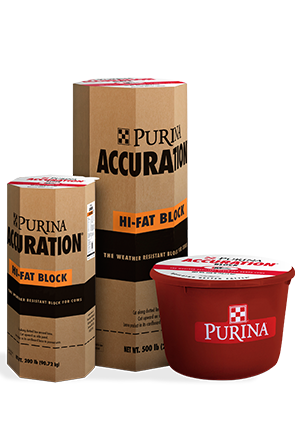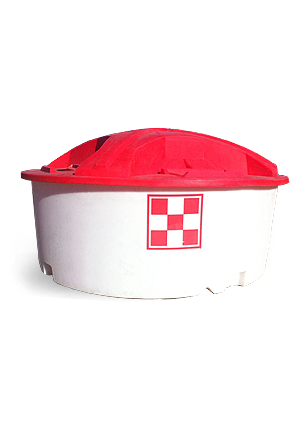
Weaning Calves? Tips to Get Them Eating Quickly
Management : Weaned Calf

Weaning calves can be a stressful time for you and your beef cattle. But, the sooner you can get your calves to eat, the less likely they are to get sick. A few adjustments to your nutrition program can make a huge difference.
If you’re weaning calves soon, here are four nutrition tips to help get them eating quickly:
For the first five to seven days of weaning calves, target calves to consume a total diet equaling 2.5-3% of their bodyweight. The total diet can consist of a purchased complete calf starter feed, or it can be a supplement paired with your existing forage. Let calves continue building intake through the 21 to 28 day weaning program to help optimize performance. There are hand-fed and self-fed complete calf starter feeds. No matter which you choose, achieving target consumption is key to keep calves healthy.
You can also achieve these goals by feeding free-choice forages of over 8% crude protein along with a palatable supplement feed and tubs. When calves come to the feed bunk for the first time they need to find a palatable feed which makes them want to come back for more. Any of these calf weaning programs can help achieve consumption.
Calf starter feeds with intake control properties can also help stimulate more consistent consumption. Feeds with intake control properties encourage calves to eat several small meals throughout the day rather than one or two big meals a day.
Don’t underestimate the importance of managing your feed bunk and paying close attention to calf behavior at feed delivery. The way calves behave at the bunk can tell you a great deal. If calves rush the bunk when feed is delivered, they are likely being underfed. If they don’t seem interested at feed delivery, they may be overfed or sick. If some calves are standing away from the feed bunk or are fighting to gain access to feed, you might not have enough bunk space.
Additional bunk best practices include making sure fresh feed is available consistently, cleaning out uneaten or spoiled feed and gradually making any shifts in the amount of feed delivered.
Placing bunks and tubs in the center of a pen can make it more challenging for calves to find them. Bunks or self-feeders should be placed perpendicular to the fence line so when calves are rounding the pen trying to determine how to get out, they will bump into their feed.
Similarly, we recommend placing mineral tubs along the pen perimeter so calves encounter them as they are circulating and begin licking the tub. Licking causes salivation, which encourages further consumption of the diet.
Weaning calves can be very stressful, but implementing a few new nutritional strategies can make the transition more seamless.
Does your nutrition program stack up? Find out with a Proof Pays feeding trial.
If you’re weaning calves soon, here are four nutrition tips to help get them eating quickly:
 1. Encourage calf starter feed consumption
1. Encourage calf starter feed consumption
For the first five to seven days of weaning calves, target calves to consume a total diet equaling 2.5-3% of their bodyweight. The total diet can consist of a purchased complete calf starter feed, or it can be a supplement paired with your existing forage. Let calves continue building intake through the 21 to 28 day weaning program to help optimize performance. There are hand-fed and self-fed complete calf starter feeds. No matter which you choose, achieving target consumption is key to keep calves healthy.You can also achieve these goals by feeding free-choice forages of over 8% crude protein along with a palatable supplement feed and tubs. When calves come to the feed bunk for the first time they need to find a palatable feed which makes them want to come back for more. Any of these calf weaning programs can help achieve consumption.
Calf starter feeds with intake control properties can also help stimulate more consistent consumption. Feeds with intake control properties encourage calves to eat several small meals throughout the day rather than one or two big meals a day.
2. Evaluate bunk space, management
Each calf needs about a foot of bunk space so all calves can be at the feed bunk at the same time. If you’re using a calf starter feed with intake control properties in a self-feeder, each calf only needs six to eight inches of bunk space because they won’t all eat at once. Instead, they’ll eat small meals and come back at different times.Don’t underestimate the importance of managing your feed bunk and paying close attention to calf behavior at feed delivery. The way calves behave at the bunk can tell you a great deal. If calves rush the bunk when feed is delivered, they are likely being underfed. If they don’t seem interested at feed delivery, they may be overfed or sick. If some calves are standing away from the feed bunk or are fighting to gain access to feed, you might not have enough bunk space.
Additional bunk best practices include making sure fresh feed is available consistently, cleaning out uneaten or spoiled feed and gradually making any shifts in the amount of feed delivered.
3. Make feed placement a priority
With a little bit of strategy, you can ensure your calves bump into food at every turn so they find feed easily and start consuming.Placing bunks and tubs in the center of a pen can make it more challenging for calves to find them. Bunks or self-feeders should be placed perpendicular to the fence line so when calves are rounding the pen trying to determine how to get out, they will bump into their feed.
Similarly, we recommend placing mineral tubs along the pen perimeter so calves encounter them as they are circulating and begin licking the tub. Licking causes salivation, which encourages further consumption of the diet.
4. Consider water sources, cleanliness
If your calves are suddenly moved into a pen with an automatic waterer and they’ve never used one before, you can’t expect them to walk right up and drink out of one. It will take some time for calves to adapt to their surroundings and navigate the facilities with ease.
Until then, one way to keep calves hydrated is to place some additional water tanks or tubs in the pen. Like feed bunk placement, water tanks or tubs should be placed along the fence line so calves will quickly find them and start drinking.
Cleanliness is also paramount to water consumption. All water sources should be checked at least daily for cleanliness and to make sure the source has adequate flow.Weaning calves can be very stressful, but implementing a few new nutritional strategies can make the transition more seamless.
Does your nutrition program stack up? Find out with a Proof Pays feeding trial.



.png?width=300&height=430&ext=.png)
